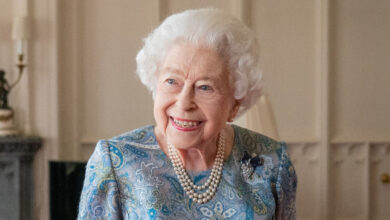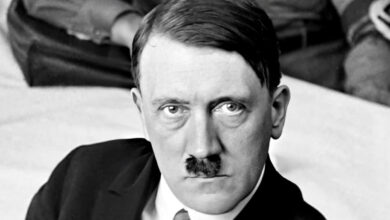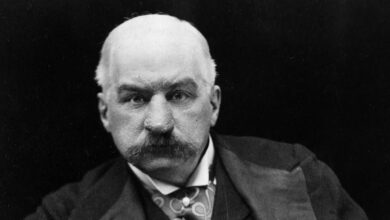“Mistakes are always forgivable, if one has the courage to admit them.” – Bruce Lee
Podcast: Play in new window | Download
Subscribe: Spotify | Amazon Music | Youtube Music | RSS
Bruce Lee Biography
Lee Jun-fan (Bruce Lee was his professional name) was born on 27 November 1940 in the Chinatown district of San Francisco, USA. He was the fourth of five children born to father Lee Hoi-chuen who was a leading actor in Cantonese opera and his mother wealthy mother Grace Ho. His siblings were two sisters called Phoebe and Agnes and two brothers called Peter and Robert. Although born in San Francisco, Bruce didn’t grow up there as when he was only three months old, his parents returned to Hong Kong.
Due to Bruce’s mother’s family connections, he grew up in a privileged and affluent environment but this did not prevent his neighbourhood from becoming overcrowded and dangerous, mainly due to the influx of refugees who were fleeing Communist China. The area was full of gangs and rivalries frequently led to outbreaks of violence. After Bruce had been involved in a number of fights, his parents decided that he needed to be taught martial arts and his first lessons in the Wu-style t’ai chi ch’uan were given to him by his father.
As a teenager Bruce had started to learn Wing Chun and in 1957, he began to study under the Wing Chun teacher Yip Man. In order to try and steer his students away from street fighting, Yip Man encouraged them to enter competitions. However, this did not prevent Bruce from getting into fights. He gave a severe beating to the son of a feared triad leader and when, in the Spring of 1959 the police were called after another of Bruce’s fights, his father decided that, for his own safety, Bruce should leave Hong Kong and return to the United States. So, in April 1959, Bruce left Hong Kong and went to live with his sister Agnes who was living with friends of the family in San Francisco.
Later that year, Bruce, who was now 18 years old, moved to Seattle and started working as a waiter for Ruby Chow in one of her restaurants. Ruby Chow’s husband, was a friends of Bruce’s father, and whilst there, Bruce went on to complete his high school education at Edison Technical School from where he received his diploma. During this time, Bruce also began teaching marital arts which was literally known as Bruce Lee’s Kung Fu and was his variation of Wing Chun from the Lee Jun Fan Gung Fu Institute, his first martial arts studio in Seattle.
Bruce enrolled at the University of Washington in 1961 and majored in drama, but also studied philosophy and psychology. A fellow student of Bruce’s called Linda Emery was studying to become a teacher and the pair met, fell in love, and were married in August 1964. During their time together, Bruce and Linda had two children. Brandon Lee was born in 1965 and Shannon Lee came along in 1969.
Bruce dropped out of college in 1964 and moved to Oakland where he opened his second Jun Fan martial arts studio along with James Yimm Lee who was well known on the martial arts circuit and was twenty years Bruce’s senior. James introduced Bruce to Ed Parker during this time who was the organiser of the Long Beach International Karate Championships and where Bruce would be ‘discovered’ by Hollywood.
Bruce Lee appeared at the championships in 1964 and demonstrated his two finger push-ups and the one inch punch. One of the volunteers upon which Bruce demonstrated the punch was Bob Baker from Stockton, California, who later said in an interview that he had to stay home from work following the demonstration due to the pain his chest which he described as ‘unbearable’.
It was during the 1964 championships that Bruce met Jhoon Goo Rhee, a Taekwondo master, and the pair became friends and taught each other different techniques.
After a controversial private fight between Bruce Lee and Wong Jack Man in Oakland in 1964 which allegedly arose as a challenge to try and stop Bruce from teaching non-Chinese people in his studio, Bruce decided that the traditional Wing Chun style of Kung Fu was too inflexible and so he decided to create his own style. This culminated in Jeet Kune Do, which translates as the ‘Way of the Intercepting Fist’, which came to fruition in 1967. Bruce had completed filming the first season of The Green Hornet, but then found himself out of work so he had time on his hands to develop the style which concentrated on practicality, speed, flexibility and efficiency. He used new techniques to improve his strength, stamina and flexibility, including running, weight training and stretching. He also adapted techniques from fencing and boxing. Bruce said that his style was the ‘style of no style’ and that he wanted to remove all formalised approaches to fighting. He also had started to take much more interest in nutrition favouring a high protein diet with additional vitamins and other supplements. He also stopped eating baked goods and refused anything made from refined flour which he described as providing him calories which gave his body no benefit.
As well as martial arts, acting was in the blood of Bruce Lee’s family. His father had been a famous Cantonese opera star and so Bruce was introduced to films from a young age and appeared in several as a child. Whilst in the USA, any thougts of a movie career were put on hold as Bruce concentrated on martial arts. This changed after the 1964 exhibition in Long Beach though as Bruce was invited by William Dozier to audition for a part in the pilot for “Number One Son”, a show which never aired, but this led to him landing the role of Kato in The Green Hornet. The show only ran for one season but Bruce would also play the part in three crossover episodes of Batman.
His role of Kato may not have lasted too long but it led to lots more work both on and off the screen in Hollywood. It also did his martial arts business no harm either as he had Hollywood people as students including actor James Coburn. In 1971, Bruce pitched an idea to Warner Brothers for a TV show called The Warrior. His concept would eventually become the show called Kung Fu starring David Carradine. Not only did Bruce not get the part of the monk with the flute in the wild west, but he would also get no credit for his involvement.
Bruce wanted to be more than he was in Hollywood. He wanted starring roles in the movies and after being contacted by producer Fred Weintraub he returned to Hong Kong where he received a rapturous welcome from adoring fans he never knew he had. As it turned out, The Green Hornet was a huge hit in Hong Kong where it was unofficially reffered to as The Kato Show.
Bruce Lee signed with Golden Harvest for two movie which would be The Big Boss and Fist of Fury. After the first two movies, Bruce negotiated a new deal with Golden Harvest and he was given complete control of the next movie, which would be Way of the Dragon. The final fight seen at the Colosseum in Rome between Bruce and Chuch Norris is legendary.
In 1972 Bruce began work on the movie Game of Death which would feature another of his students, former American Basketball star Kareem Abdul-Jabbar. However, production was suspended when Warner Brothers and Golden Harvest teamed up to make a Hollywood martial arts feature called Enter the Dragon, and offered Bruce Lee the leading role. The movie was released on 26 July 1973, but Bruce Lee did not see its release as just six days before, he died as a result of a cerebral edema, maybe as a result of an allergic reaction to a tranquilizer called meprobamate, an ingredient in a painkiller he had taken for a headache. He was 32 years old. Bruce Lee is buried at lot 276 of Lakeview Cemetary in Seattle, Washington, USA. Pallbearers at his funeral were a number of his friends and students from Hollywood including Steve McQueen, James Coburn and Chuck Norris.
Podcast: Play in new window | Download
Subscribe: Spotify | Amazon Music | Youtube Music | RSS




